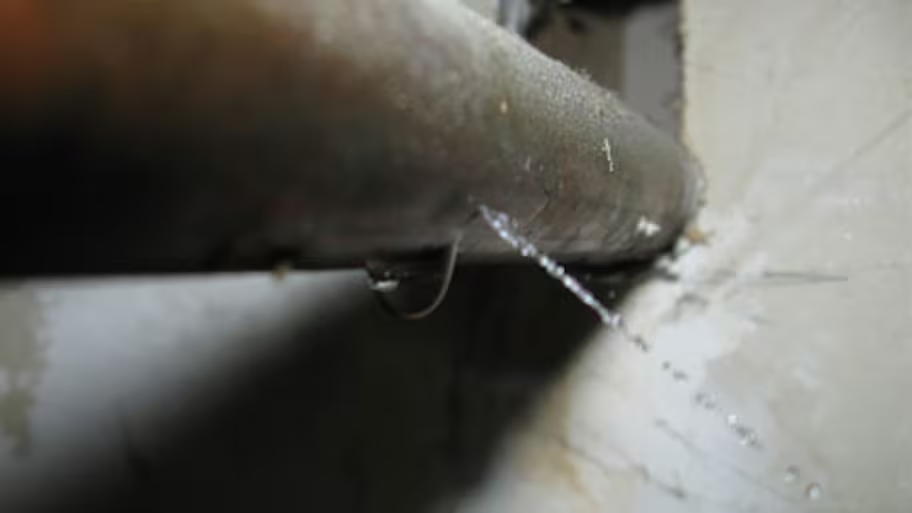What're your ideas on How to detect water leaks in your home?

Leaks not only create waste of water however can additionally trigger unneeded damage to your house as well as advertise undesirable natural growth. By understanding as well as looking for everyday scenarios that create leaks, you can protect your residence from future leakages and unneeded damages.
Trespassing origins
Many water leaks begin outside the home rather than inside it. You could observe wet spots or sinkholes in your lawn, and that could imply that tree origins are getting into water lines causing water to leak out.
Corroded water supply
As time passes by, your plumbing system ages and also corrosion such as corrosion may begin eating away the pipes. This could be the reason for staining or warping on your water pipes. This asks for an inspection with your plumber promptly. If our plumbing system is old, think about replacing the pipes given that they go to a higher risk of rust than the more recent versions.
Faulty Pipeline Joints
The point at which your pipes attach is frequently the weakest link in the waterline. Pipeline joints can deteriorate gradually, causing water leaks. The majority of pipe joints are not easily noticeable. If you have loud pipes that make ticking or banging sounds, particularly when the hot water is activated, your pipe joints are possibly under a great deal of pressure. It is a good idea to have your plumber examine your system annually.
Immediate temperature level changes.
Severe temperature level changes in our pipes can trigger them to expand and get unexpectedly. This growth and contraction might trigger fractures in the pipes, especially if the temperature level are below freezing. If you kept an eye on exactly how your plumbing works, it would be best. The presence of the previously discussed circumstances frequently indicates a high threat.
Poor Water Connectors
Sometimes, a leakage can be triggered by loose hose pipes and also pipelines that provide your devices. Most of the time, moving is what triggers the loosened water Connections. You may discover in the case of a washing machine, a hose pipe might spring a leak because of drinking during the spin cycle. In case of a water connections leakage, you might observe water running directly from the supply line or puddles around your appliances.
Obstructed Drains
Clogged drains may be irritating as well as inconveniencing, but they can sometimes wind up triggering an overflow resulting in burst pipelines. Keep eliminating any materials that might go down your drains that can clog them to prevent such inconveniences.
All the above are sources of leakages however not all water leakages result from plumbing leakages; some leakages might originate from roof covering leakages. All leakages must be repaired right away to avoid water damages.
Leakages not only cause waste of water yet can additionally create unnecessary damages to your home and promote unwanted organic development. By understanding as well as looking for day-to-day situations that cause leaks, you can protect your home from future leakages and unnecessary damage. Today, we will look at six leak triggers that might be creating your pipes to trickle.
At times, a leakage can be caused by loose hoses as well as pipelines that provide your devices. In instance of a water connections leak, you may discover water running straight from the supply line or puddles around your devices.
How To Check For Water Leak In Your Home
How To Check for Leaks
The average household's leaks can account for nearly 10,000 gallons of water wasted every year and ten percent of homes have leaks that waste 90 gallons or more per day. Common types of leaks found in the home are worn toilet flappers, dripping faucets, and other leaking valves. These types of leaks are often easy to fix, requiring only a few tools and hardware that can pay for themselves in water savings. Fixing easily corrected household water leaks can save homeowners about 10 percent on their water bills.
To check for leaks in your home, you first need to determine whether you're wasting water and then identify the source of the leak. Here are some tips for finding leaks:
Take a look at your water usage during a colder month, such as January or February. If a family of four exceeds 12,000 gallons per month, there are serious leaks.
Check your water meter before and after a two-hour period when no water is being used. If the meter changes at all, you probably have a leak.
Identify toilet leaks by placing a drop of food coloring in the toilet tank. If any color shows up in the bowl after 10 minutes, you have a leak. (Be sure to flush immediately after the experiment to avoid staining the tank.)
Examine faucet gaskets and pipe fittings for any water on the outside of the pipe to check for surface leaks.
Undetected water leaks can happen without the home or business owner even realizing. If you suspect a water leak, but not able to find the source. It is time to contact a professional water leak detection service, The Leak Doctor.
How To Find a Water Leak In Your Home
https://www.leakdoctor.com/blog/How-To-Check-For-Water-Leak-In-Your-Home_AE197.html

Do you really like more info about How to Find Water Leaks? Post a remark down below. We'd be interested to see your thinking about this write-up. Hoping that you come back again before long. Liked our blog entry? Please share it. Let others locate it. I take joy in reading our article about Common Water Leaks In House.
Request expert assessment.
Comments on “Learn About Main Origins Leading To Water Leak Issues in Your Home”